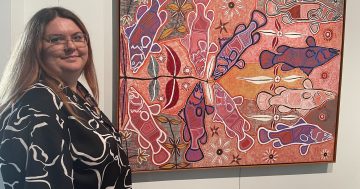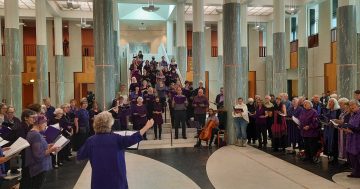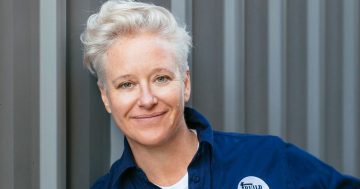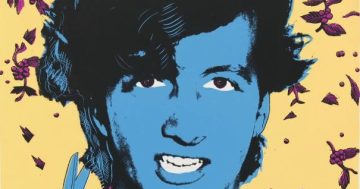
One of the treasures of the Parliament House art collection, the banner by Dora Meeson which was carried by Australian suffragists in England in 1908. Photo: Australian Parliament House Art Collection.
They might not be as well known, have been as loud or as so incarcerated as their British sisters, but Australia’s suffragists were a force on their own – a force that helped change the course of history for women everywhere.
The Every Voice Counts: Suffrage in Australia exhibition has just opened at Parliament House, Canberra, on the first floor exhibition space.
Curated by Stephanie Pfennigwerth, the exhibition marks the 120th anniversary of the Commonwealth Franchise Act, 1902.
Ms Pfennigwerth said that through items sourced from the Parliament House art collection and loans from other cultural institutions, the exhibition tracked the history of suffrage in Australia, the role of the Federal Parliament in electoral reform and Australia’s influence on overseas suffrage campaigns.
“The landmark law the Commonwealth Franchise Act of 1902 granted most Australian women the right to vote but to also stand in federal elections,” she said. “Australia was the first country to grant such rights.”

Exhibition curator Stephanie Pfennigwerth, with Director of the Parliament House Art Collection, Apolline Kohen, in front of the image of “that daring girl” Muriel Matters. Photo: Sally Hopman.
Ms Pfennigwerth said although countries were making a lot of noise about the advancement of their women, Australia was starting to, quietly, lead the way.
“You just have to look at the timeline of how all this happened to see how legislative reform in Australia encouraged more women to take on a more public role in the nation’s democracy.”
One of these women was Muriel Matters, also known as “that daring girl”, whose life and work is showcased in the exhibition. Matters, an Adelaide-born elocutionist and actress, athough proud of what her Australian sisters had achieved, was like many women who believed they had to go to the mother country to really be heard. She sailed there in 1905, braving a not-so-friendly welcome.
But Matters ignored the critics to give speeches throughout Britain about a woman’s right to vote. In 1908, she entered the Ladies Gallery in the British House of Commons which was enclosed by metal grilles, making its inhabitants feel like they were in jail, which apparently was not a design accident, so women could not see proceedings.
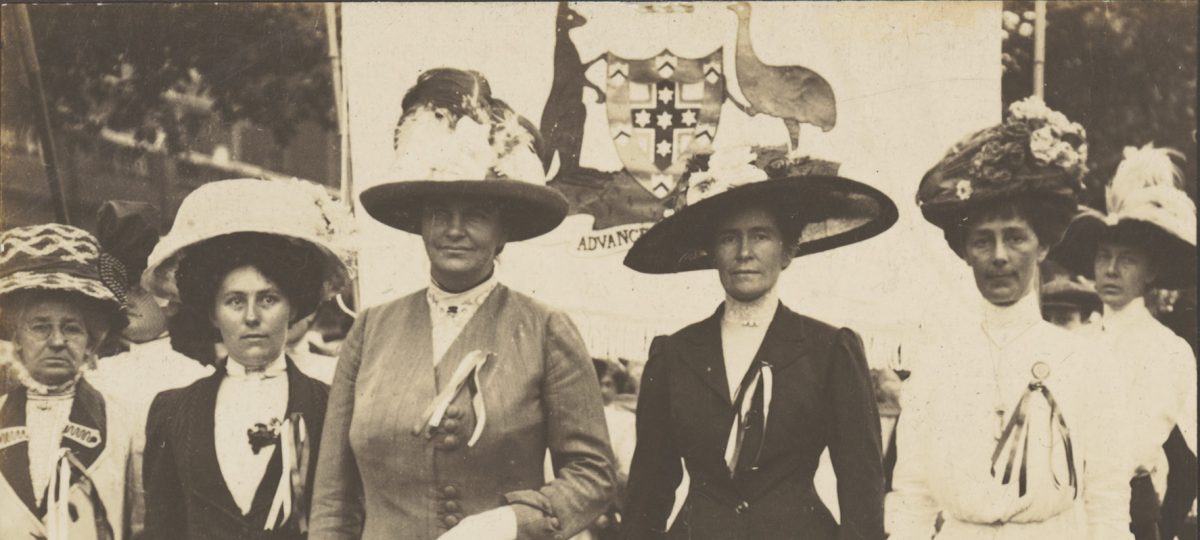
The Rose Stereograph Company, Great Suffragette Demonstration in London, Mrs Andrew Fisher, centre, Mrs McGowen, right and Miss Vida Goldstein, far right. Photo: National Library of Australia.
Matters and other woman chained themselves to the grilles before she rose to her feet. “Mr Speaker, Members of the Liberal Government,” she called out. Parliamentary attendants raced in to silence her. Others came in with tools to remove her. Even when the grilles were unscrewed from the wall, Matters remained attached and kept up her protests. Because she was still talking after being unceremoniously dumped on the floor of the chamber – she became the first woman to speak in the British Parliament.
Known as suffragists in Australia, exhibition curator Ms Pfennigwerth said Australians today had every reason to be proud of these women. Campaigners like Vida Goldstein, was a prime example. Her newspapers, Women’s Sphere (1900-1905) and Woman Voter (1909-1919) reached British audiences and helped promote the cause here and overseas. Goldstein was invited to lead the Australian contingent in the Women’s Coronation Procession in London, 1908, before the coronation of King George V.
The contingent included artist Dora Meeson whose banner implored Mother England to grant women’s suffrage as Australia had done in 1902.
This banner, a work in oils painted on hessian, is the centrepiece of the exhibition and one of the Parliament House art collection’s treasures. It depicts “daughter” Australia as Minerva, goddess of wisdom, carrying the first Commonwealth Coat of Arms. Minerva is imploring “Mother” Britannia to accept her advice and grant women’s suffrage.
It was donated to the Parliament House Gifts Collection in 2002.
Join exhibition curator Stephanie Pfennigwerth on a special tour of the exhibition on Sunday, 21 August, from 1 pm. Book now on 02 6227 5399 or via email at visitorservices@aph.gov.au
Every Voice Counts: Suffrage in Australia is a free exhibition, open daily until 6 November, Parliament House, Canberra.















